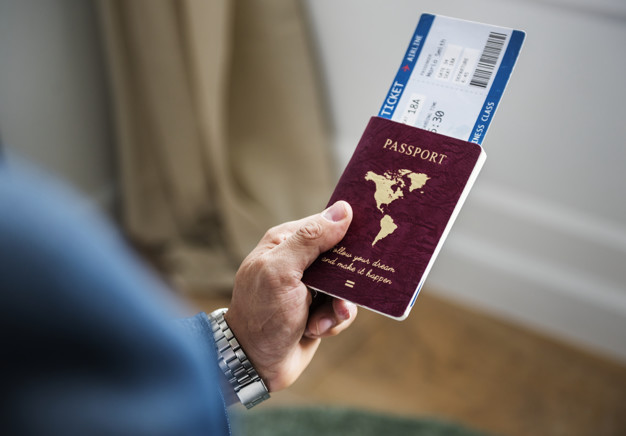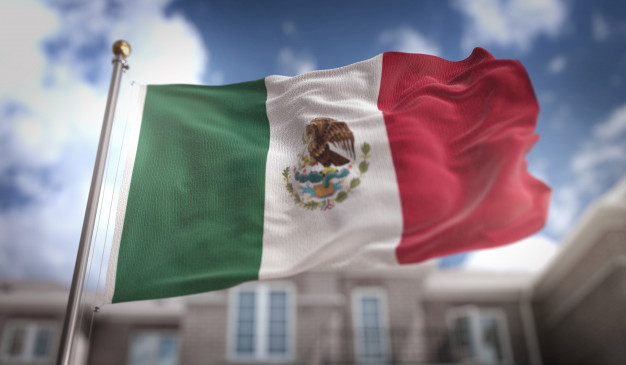Is it worth crossing the ocean to see a part of the country where the people around you see the only danger, from the media known for the border with the United States or for catching a beast from Interpol arrest warrants? Stories of bloodthirsty and cunning cartels lurking naive tourists to get you on a plane with drugs in your bag. When you watch a television program in which playful Americans, after an idyllic weekend in the company of new but fake Mexican friends at the border, get caught with kilograms of cocaine in their colon, the first contact with that country must be in spasms.
Mexico is a large country that needs a studious approach to get to know it somewhat geographically. Mexico is a country of 120 million people, and according to data, it is made up mostly of an ethnically mixed population between domicile Indians and settlers.
To enter this beautiful country, certain regulations and laws must be applied.
Passport is required

Even if you are flying from the US, you will need a passport to enter Mexico, but not a visa. However, if you travel by land or water, you will be able to step on the soil of this country if you do not have a passport, but have another valid identity document.
Check for malaria epidemics in the country you are traveling to
Visit the CDC (Centers for Disease Control and Prevention) website to see if your trip will pass through this area. Areas near the U.S.-Mexico border are not currently contaminated. Areas with reported cases of infection: Chiapas, Nayarit, Oaxaca, Sinaloa, Chihuahua, Durango and Sonora, Quintana Roo and Tabasco. Malaria prevention includes prescription antimalarial drugs, insect repellents, and bed mosquito nets.
Check what your current overseas health insurance covers

The COVID-19 pandemic has been present all over the world for more than a year, including Mexico. As a tourist, you have to respect the preventive measures of this country even if they are completely different from the measures in the country you come from. If you do not have international health insurance, it is recommended that you pay for it, so that you do not find yourself unprepared in case of injury or illness.
Observe the speed limit

If you’re traveling in your car, remember that in Mexico, speed is read in miles, not miles. Take note of this so you don’t have to pay a fine. In some parts of the country, cattle often go out on the main road. Adjust your speed so that you can react in time in case of such or other unpredictable situations. Should we add that car insurance is necessary when you go on a further trip, especially to another country? Read more on Mexican Insurance Store and inform yourself about everything you should know before traveling.
Understand the law

Familiarize yourself with general traffic laws. In the event of a car accident, know what to expect. In the event that a police officer stops you for driving improperly, it is best not to pay the fine on the spot but at the police station.
What can I convey across the border?
Tourists are allowed to bring personal belongings duty-free, so in addition to clothes, you can bring a laptop, a video camera, and a phone. If you do not report any of these goods, the whole case is treated as smuggling, and you may be left without a car because it is considered a means by which the goods were smuggled.
What is the best time to travel to Mexico?

While it’s always a good time to travel to Mexico, depending on the type of activity or above all, if you’re looking for the best time, it’s worth considering some recommendations:
High season (December to April): These are the driest months in most of the country and the least hot, so they are also the best for this trip.
Mid-season (July and August): Although it is usually very hot, especially on the coast, this is a holiday period for many locals and foreigners, so tourist areas are usually full and prices are much higher.
Low season (May and June and from September to November): These months of the year are the tiniest because September and October are usually hurricane times, and May and June, the warmest months in many areas of the country.
Money exchange
The Mexican currency is the Mexican peso and currently, 1 euro equals 22.12 Mexican pesos. Although you may initially think differently, according to our experience and after many trips, for traveling to Mexico we recommend that you always use a card to pay and withdraw money at ATMs to avoid paying commissions and worse currency changes.
More tips for traveling to Mexico

Remember that if you are going to drive to Mexico, you need to have an international card.
In Mexico, the voltage is 127V, the frequency is 60Hz, and the plugs are A / B type, so you will have to carry an adapter.
If you are traveling by rental car, we highly recommend that you look for the best hotel for your next destination. Sometimes GPS or Google Maps give you routes that aren’t good roads or not very safe, and locals can give you the most reliable information.
If you are traveling to Mexico in high season, keep in mind that it is important to book flights, accommodation, and car rental in advance in order to achieve good prices and have more choices.
Final thoughts
With basic guidelines, your trip will be safe and memorable, because this country is rich in many natural beauties, and its neighbors, Americans are happy to choose it as a favorite tourist destination, both because of this and because of the fact that Mexico is cheaper than any American country. So, pack your bags and dare to meet new people and a new culture, discard the prejudices you’ve heard so far.

